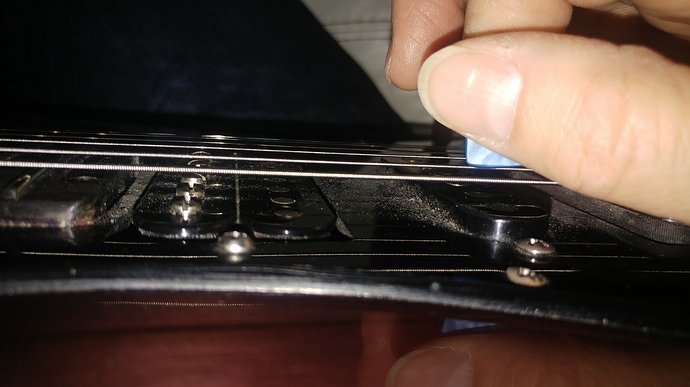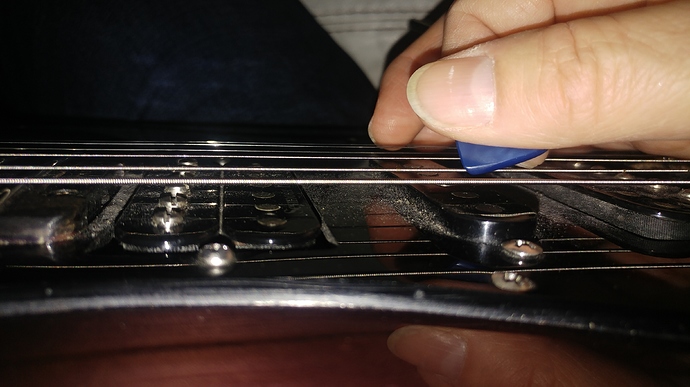Your pickslant is different in the two photographs you posted. If you film down the strings in Magnet view, you will see this. It might not be dramatically different, but it is different enough to change the balance of upstroke vs downstroke attack, which is why you feel a difference in attack when you make these changes.
Trying to re-point the pick in the middle of a phrase by turning it is not a thing players appear to do, which is why I said that. But I don’t think this is what Martin is doing, specifically. He has a straighter index grip and a more trigger index grip. We talked about this explicitly. He perceives this as changing the pick point but he’s actually changing his whole grip around.
The trick is this doesn’t really change the motion, which is why we laughed about it when we saw that. What Martin calls “pickslanting” isn’t pickslanting - he’s still making a similar motion. He’s just doing it with a more trigger style grip. Martin’s picking motion is deeply burned into his technique. It’s mainly the fastest speeds where he uses the more elbow / wrist style of motions. For everything else, it’s some variation on his usual double escape (if we can call it that) technique.


